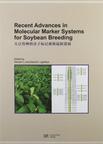大豆育种的分子标记系统最新进展
出版时间:2012-1 出版社:科学出版社 作者:李文彬、David A.Lightfoot 页数:263 字数:567000
内容概要
现代分子标记技术与大豆育种(英文版)系统地介绍了各种类型分子标记的发展概况和开发技术,QTL分析和分子辅助育种的基本原理,阐述了大豆产量性状、品质性状、抗病虫性状、动态发育性状分子标记和QTL的最新研究进展及大豆分子设计育种的基本设想及展望。该书反映了近年分子标记在大豆遗传改良方面获得的成果。
作者简介
Wenbin Li
Key Laboratory of Soybean Biology in Chinese Ministry of Education(Agriculture Research System of China and the Key Laboratory of Northeastern Soybean Biology and Breeding/Genetics of Chinese Agriculture Ministry),Northeast Agricultural University,Harbin,China.150030
David A.Lightfoot
Illinois Soybean Center for Excellence in Soybean Research,Southern Illinois University at Carbondale,Carbondale,IL 62901,USA
书籍目录
AcknowledgementPrefaceChapter 1 Essential principles of molecular marker and quantitative trait loci associationsChapter 2 Method development for identifying functional markers in the soybean genomeChapter 3 Map development and marker-assisted selection for oligogenic and polygeneic traitsChapter 4 QTL analysis of fungal disease resistanceChapter 5 Identification of loci for resistance to insects and nematodesChapter 6 QTL analysis for seed quality traitsChapter 7 Seed yield and component trait lociChapter 8 Loci underlying soil edaphic, physiological and developmental traitsChapter 9 Dynamic QTL analysis of major quantitative traitsChapter 10 Molecular mapping and breeding for biotic stress resistanceColored Figures
章节摘录
A novel DNA-cleaving reagent became available when it was shown that Mu transposition preferentially targets mismatched sites in DNA (Yanagihara and Mizuuchi2002). This paved the way to establish the mismatch-targeting methodology and indicate, using a known polymorphic test fragment, that mutation indeed can be detected by the use of the Mu transposon approach. Mu A transposase protein assembles two transposon end segments into a tetrameric DNA transposition complex, which can capture the target DNA and cause the strand to transfer. The transposon DNA is joined into the target when the target DNA strands are simultaneously cleaved, where nearly 90o/o of the strand transfers occur when mismatches are present in the target DNA. DNA duplexes that contain mismatches can be obtained by amplification of regions where the genomic DNA contains at least two alleles, or when the region is amplified from a heterozygous individual or from a sample that corubines DNA from two or more individuals representing different allelic variants (Orsini et al. 2007). Prospect for Future Study of Functional Markers Many candidate genes for functional marker development are available and allele sequencing projects are in process in soybean (Afzal et al. 2012), Arabidopsis (http://walnut.usc.edu/) and other economic crop species (e.g. http://www.grasp-euv.dk/; http://www.maizegenetics.net/). However, even in model species, less than 10% of all genes have been functionally characterized, whereas this number is probably less than 5% in non-model species. Furthermore, the criteria by which such genes have been functionally characterized (e.g. in a biological sense) might not be sufficient to establish gene function in an agronomic sense. Thus, further functional characterization might be necessary before proceeding to functional marker development. Furthermore, a crucial question will be whether useful allelic variation can be identified for all genes of ecological and agronomical relevance. Given that functionally described target genes are available, the limiting step in functional marker development will be the choice and development of suitable plant materials and its thorough phenotypic characterization to distinguish minor phenotypic effects. Refining the predictive value of functional markers will require the development of an experimental, statistical and bioinformatics framework for data accumulation and evaluation across different studies. The soybean genome data have been published (Schmutz et al. 2010). The corresponding research base on the genome will rapidly develop, including functional markers (Wu et al. 2010; Lam et al. 2010). Association studies and isogenic comparisons of homozygous genotypes can be extended to test crosses using different testers to determine both additive and dominance effects of functional sequence motifs. Estimates of additive and dominance effects are determined in a relative manner (i.e. the estimates depend on the trait locus alleles as well as the genetic background of genotypes present in a specific study). The data accumulation provided by next-generation sequencing technology has been rapid in recently years. Different varieties of soybean genome were sequenced by several institutes, and these studies will further drive the development of functional markers. Since within cultivar variation can be quite high to integrate data across experiments, common reference genotypes need to be used in all studies (Lam et al. 2010). Both mutant and QTL association studies are facilitated by the ability to produce inbreds (reviewed by Lightfoot 2008). In species with weak self-incompatibility mechanisms or a low degree of inbreeding depression, like soybean, NILs derived from heterogeneity in RILs populations or their parents can be compared that are fixed for different functional marker alleles. Therefore, the identification of small functional markereffects will not be complicated by polygenic variation. ……
图书封面
评论、评分、阅读与下载
